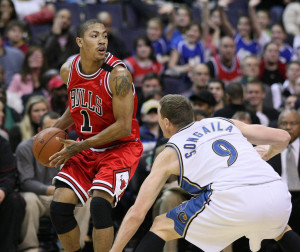Basketball Player Positions Explained: Point Guard
The starting point for working towards training a player as a Point Guard is to define what a good basketball player in this position looks like. Having an idea, a vision of what the ideal player looks like is important in deciding what is a high, medium and low priority as far as a player’s development is concerned. As a coach, part of the role in developing a player who is looking to be a future Point Guard is to provide analysis and valuate what knowledge and skills need to be development and when.
It is probably important to note that there are always exceptions to the general rule. These situations will be the rarity rather than the norm. It is the stability and foresight of the coach in these situations to be able to weigh up the strengths, weaknesses, and opportunities and make a decision in regards to what path to find and follow.

It is suggested that every coach review the Skills Matrix that is published by many governing bodies in regards to when fundamental technical skills need to be introduced within the overall development of a player throughout their basketball career. The skills matrix are a good starting point for identifying skills and developing a coaches knowledge about what they should be looking for.
A Point Guard is the floor general for a basketball team. This player should be an extension of the coach on the floor. Able to communicate the tactical and strategic information needing to be communicated and re-enforced constantly to keep the players on task and focus squarely centred on what needs to be done now. For this reason, the Point Guard must be a student of the game and able to understand the finer points of game administration. Able to manage the shot clock, recognise defensive orientations, choose offensive play selection and maintain composure on the floor are just some of the more important attributes.
A Point Guard must be a proficient ball handler. In this guard position any player will be expected to be able to deal with extended pressure and the basis for this ability is firmly grounded in an above average ball handling. The ability though is not limited to full court situations, but also being able to penetrate to score and penetrate to dish in the half court out of offense is also a mandatory skill.
The Point Guard needs to be an excellent distributor of the ball through passing. Many times when passing is discussed it is often debated around the range of different skills able to be performed and how technically substantial a player is at these range of technical skills. This however is limiting perspective and a Point Guard’s passing ability needs to be discussed in view of the context. A Point Guard must be able to pass under pressure or in trapping situations. The Point Guard must be able to pass in condensed traffic when achieving dribble penetration in the half court. In addition, the Point Guard must be as comfortable passing the ball into the post or interior targets as reversing the ball around the perimeter. These three scenarios are just a sample of the different situations a Point Guard’s passing needs to of standard and highly efficient.
A Point Guard needs to be able to make is regularity the uncontested jump shot from mid and long range. This is a skill in younger years of development that is often overlooked in preference of the player just being secure with the ball or an effective distributor. The ability of the Point Guard to contribute points is something that is now the norm in modern basketball and in some instances this player is a primary offensive option especially with teams that use the pick and roll tactic heavily within their offensive system.
Defensively the Point Guard needs to be able to contain quick players to three dribbles in the half court. This is vital to the defensive structure of a team as containing the oppositions Point Guard and limiting production is a significant advantage. In the half court, the ability to defend players comes down to more than just foot speed. It includes positioning, balance, reading the offensive players body movements, and knowing their tendencies are all skills needed by the Point Guard.
Stealing the ball and being able to take a charge are also defensive qualities that a Point Guard should be looking to develop. Similarly to interior players developing qualities like shot blocking, on the perimeter the bread and butter defensive technical skills are stealing and taking a charge.
Great players in the Point Guard position come in many different shapes and sizes. No one skill set is exclusive and can be incorporated into the Point Guard position. Having a physically dominate player who can post up (Magic Johnson) is still very capable of playing the Point Guard position just the same as a smaller quicker player who is able to split the defence and slice their way to the basket (Toni Parker). The skills listed above though tend to be the starting points for the development of a player into a Point Guard, additional skills can always be thrown into the mix to add variety and depth to the players skill set.


